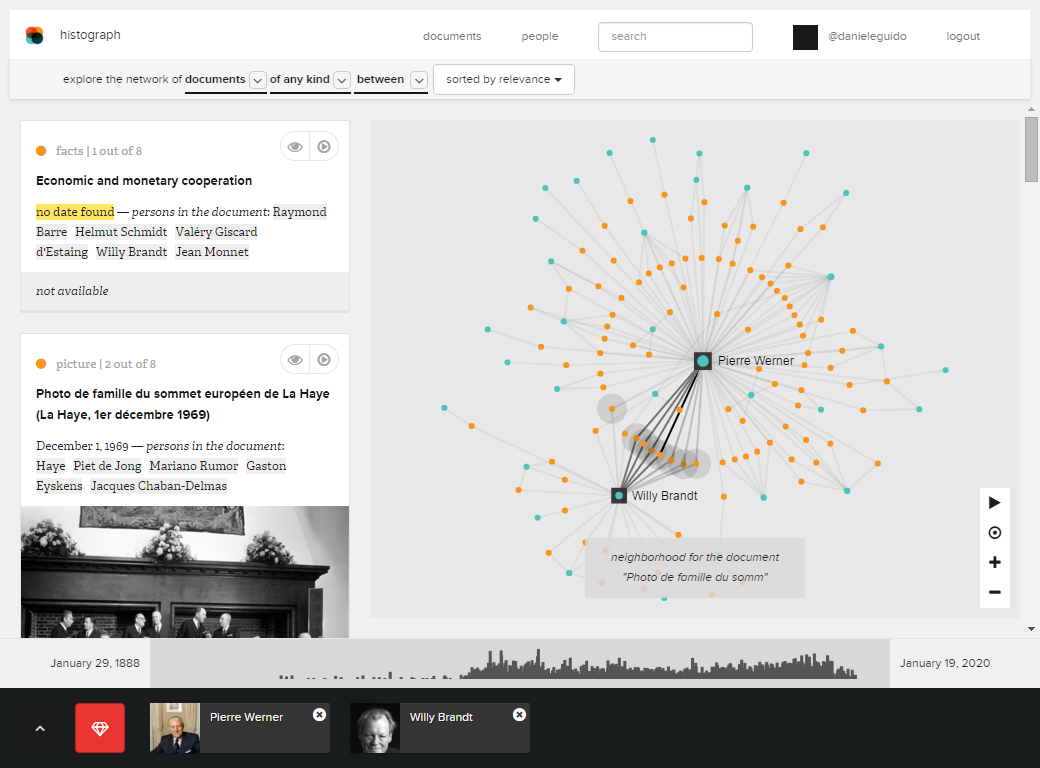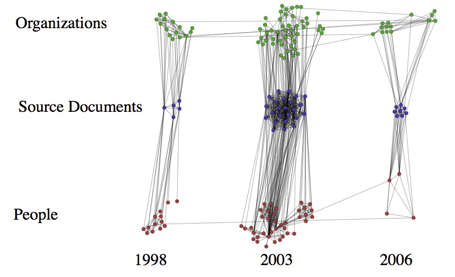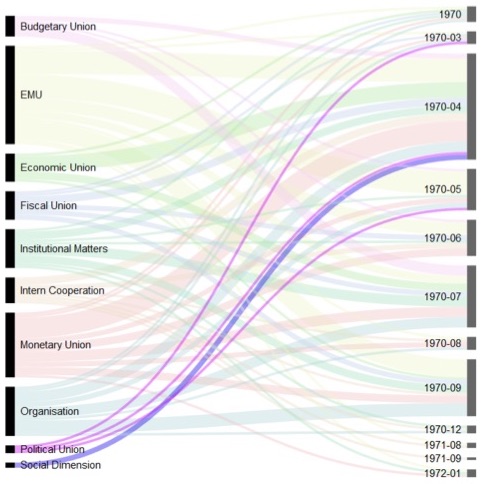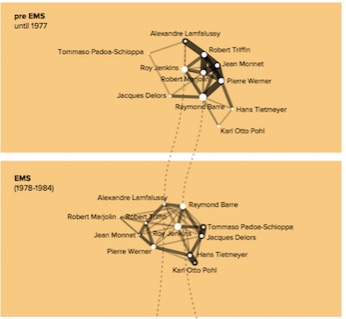Social Network Analysis
The concept of networks is omnipresent today and can be encountered for example in the form of metaphors, as graphs – either visible or hidden away in technical systems. The term itself and related concepts such as “embedded”, “entangled”, “broker” or “cluster” are often used to represent the significance and impact of relations between actors. Overall the idea, that relations shape the actors they connect, has gained more and more traction in recent years and Manuel Castell’s dictum of the Network Society has by now become the lead metaphor of our time.
However, the idea that social relations matter and that complex interactions can be organized and studied in the form of networks is not new at all: Node-link diagrams have been used to visualize complex relations hundreds of years ago just like “network”-related metaphors have been used to describe the positive and negative effects of social relations. Apart from these figurative applications, explicit research on social networks started with Georg Simmel and Emile Durkheim in the late 19th century. In Mathematics, Leonhard Euler’s bridge problem is often seen as the beginning of graph theory which is the basis for any mathematical description of the structural properties of networks. Network-derived methods and concepts are increasingly influential in a number of disciplines, among them sociology, linguistics, geography, psychology, physics, computer science, design and economics. The interdisciplinary field of Social Network Analysis (SNA) brings these and a wide range of other disciplines together to study the effects of social relations. SNA plays out its strengths where social relations have explanatory power. In addition, network visualizations and quantitative analyses make it possible to study large and highly complex datasets. There is increasing interest in network analysis in the humanities and in history in particular. While at first social scientists set out to study social phenomena on selected historical datasets, historians have today found their own uses of Social Network Analysis theories and methods to help them answer dedicated historical research questions.
In parallel to academic research on social relations, network visualizations and computations have emerged as a powerful means to analyse, represent and explore complex relations of any kind. They can reveal clusters, gaps, bridges and change over time in highly complex networks.
Netvisa projects combine different techniques for the extraction, analysis and representation of relational data. They are driven by the goal to effectively combine network analysis methods and theories with historical research practices.




